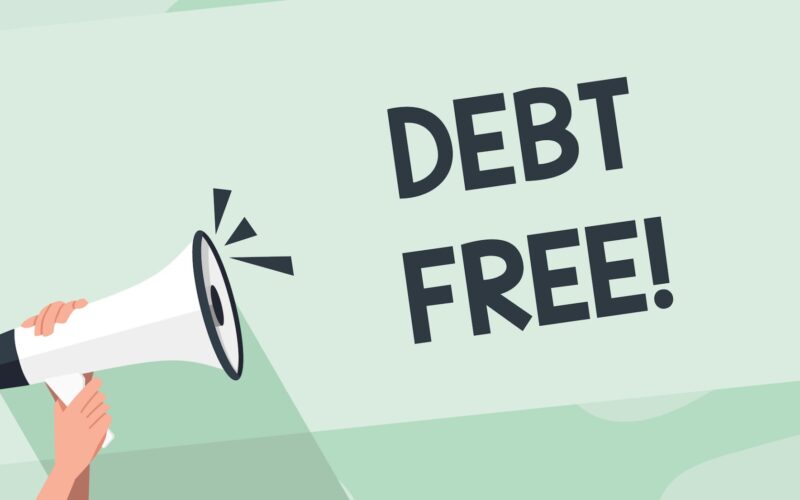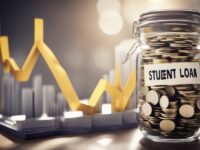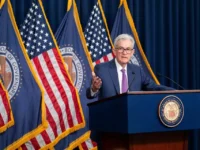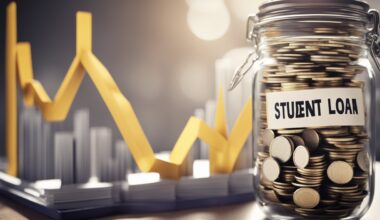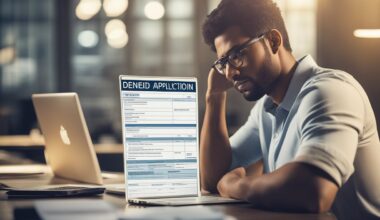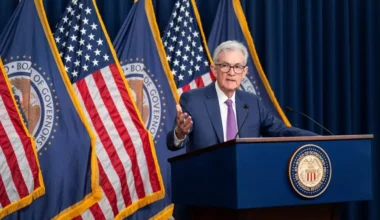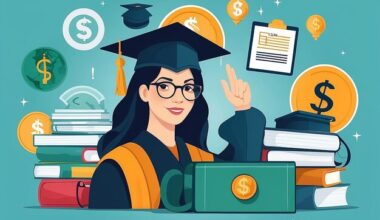Student loan forgiveness has become a hot topic in recent years, as student debt continues to rise in the United States. The burden of student loans can be overwhelming for many graduates, and the prospect of loan forgiveness is an attractive solution for those who are struggling to make ends meet. There are various programs and benefits available to help repay federal student loans, including full loan forgiveness, income-driven repayment plans, Public Service Loan Forgiveness (PSLF), and teacher loan forgiveness.

President Biden has made student loan forgiveness a priority in his administration, announcing several initiatives to provide debt relief to millions of borrowers across the country. In March 2021, the Department of Education approved $1.2 billion in loan forgiveness for over 150,000 borrowers who signed up for the SAVE Plan, a repayment plan that accelerates forgiveness for low- and middle-income borrowers who have been paying for a decade. In addition, the Biden-Harris Administration announced the approval of $7.7 billion in additional student loan debt relief for 160,500 borrowers, including those receiving PSLF and those who are eligible for the SAVE Plan’s shortened time-to-forgiveness.
Despite these efforts, the debate over student loan forgiveness remains contentious, with some arguing that it unfairly benefits certain groups of borrowers and others calling for more comprehensive solutions to the student debt crisis. As the conversation continues, it is important for borrowers to stay informed about their options and take advantage of the resources available to them.
Understanding Student Loan Forgiveness

Student loan forgiveness is a program that allows borrowers to have some or all of their student loan debt canceled or discharged. This can provide significant financial relief for those who are struggling to repay their loans. There are many different types of forgiveness programs available to borrowers, each with its own eligibility criteria and application process.
Eligibility Criteria
To be eligible for loan forgiveness, borrowers must meet certain criteria. For example, some programs require borrowers to work in specific fields, such as public service or teaching, while others require borrowers to have a certain type of loan or to have made a certain number of payments. Additionally, some programs have income requirements, while others do not.
Types of Forgiveness Programs
There are several types of loan forgiveness programs available to borrowers. One of the most well-known programs is the Public Service Loan Forgiveness (PSLF) program, which allows federal student loan borrowers who work in public service to have their loans forgiven after making 120 qualifying payments. Another program is income-driven repayment (IDR) forgiveness, which allows borrowers who are enrolled in an income-driven repayment plan to have their remaining loan balance forgiven after a certain number of years of repayment.
Other forgiveness programs include the Teacher Loan Forgiveness program, which provides loan forgiveness to teachers who work in low-income schools, and the Military Service loan forgiveness program, which provides loan forgiveness to members of the military who have served in certain capacities.
Application Process
The application process for loan forgiveness programs varies depending on the program. Some programs require borrowers to submit an application, while others may automatically enroll borrowers who meet certain criteria. In general, borrowers will need to provide documentation to prove their eligibility for the program.
It is important for borrowers to carefully review the eligibility criteria and application process for each forgiveness program to determine which program is right for them. Additionally, borrowers should be aware that loan forgiveness may have tax implications, and they should consult with a tax professional before applying for forgiveness.
The Impact of Loan Forgiveness

Loan forgiveness has become a hot topic in recent years, particularly in the United States, where student debt has risen to unprecedented levels. While the idea of loan forgiveness may sound appealing to borrowers, it also has significant implications for other stakeholders, including families, the economy, and higher education institutions.
On Borrowers and Families
The impact of loan forgiveness on borrowers and families is perhaps the most obvious. Loan forgiveness can provide significant relief to borrowers struggling to repay their loans, freeing up income that can be used for other expenses. This can be especially beneficial for families with lower incomes, who may be more likely to struggle with student debt.
However, loan forgiveness may also have unintended consequences for families. For example, some borrowers may become more likely to take on additional debt, knowing that their existing loans will be forgiven. Additionally, loan forgiveness may make it more difficult for families to save for other expenses, such as retirement or their children’s education.
On the Economy
The impact of loan forgiveness on the economy is complex and multifaceted. On the one hand, loan forgiveness can provide a significant boost to the economy by freeing up disposable income that can be used for other expenses. This can help stimulate consumer spending and create jobs.
On the other hand, loan forgiveness may also have negative consequences for the economy. For example, it may lead to higher taxes or increased government debt. Additionally, loan forgiveness may discourage some borrowers from repaying their loans, which could lead to higher default rates and increased costs for lenders.
On Higher Education
Loan forgiveness also has significant implications for higher education institutions. On the one hand, loan forgiveness may make it easier for students to afford college, which could lead to increased enrollment and higher graduation rates. Additionally, loan forgiveness may encourage colleges to reduce their tuition rates, making college more affordable for everyone.
On the other hand, loan forgiveness may also have negative consequences for higher education institutions. For example, it may lead to decreased funding for colleges and universities, which could lead to reduced services and programs. Additionally, loan forgiveness may make it more difficult for colleges to attract and retain students, particularly those who are not eligible for loan forgiveness.
In conclusion, loan forgiveness has significant implications for borrowers, families, the economy, and higher education institutions. While loan forgiveness can provide significant relief to borrowers struggling with student debt, it also has unintended consequences that must be carefully considered.
Recent Developments and Future Directions
Legislative Changes
The Biden administration has been active in proposing and implementing legislative changes related to student loan forgiveness. One of the major changes is the Debt Relief Plan, which aims to provide relief to low- and middle-income borrowers. The plan includes full forgiveness of interest for individuals making less than $120,000 a year, or couples making less than $240,000, and cancellation of loans for borrowers with any graduate debt who entered repayment 20 or more years ago.
Another legislative change is the President Biden’s Saving on a Valuable Education (SAVE) Plan, which provides shortened time-to-forgiveness benefits for borrowers who signed up for the program. The U.S. Secretary of Education, Miguel Cardona, has also proposed changes to the Higher Education Act, which include expanding access to direct loans and improving the PSLF Help Tool.
Supreme Court Decisions
The Supreme Court has also been involved in recent developments related to student loan forgiveness. In June 2022, the Court ruled that discretionary income can be used to calculate payments for borrowers in income-driven repayment plans. This decision has significant implications for borrowers who are struggling to make payments on their loans.
Policy Proposals
In addition to legislative changes and Supreme Court decisions, there have also been various policy proposals related to student loan forgiveness. One proposal is to expand the eligibility criteria for the PSLF program, which currently requires borrowers to work in certain public service jobs for 10 years before being eligible for loan forgiveness. Another proposal is to implement a negotiated rulemaking process to address issues related to student loan servicing and debt collection.
Overall, recent developments and future directions related to student loan forgiveness are focused on providing relief to borrowers who are struggling to make payments on their loans. The Debt Relief Plan, President Biden’s SAVE Plan, and proposed changes to the Higher Education Act are all aimed at making it easier for borrowers to manage their debt. The Supreme Court decision related to discretionary income is also a positive development for borrowers in income-driven repayment plans.
Frequently Asked Questions
What are the eligibility requirements for federal student loan forgiveness?
To be eligible for federal student loan forgiveness, individuals must meet specific requirements. Some of the eligibility requirements include working for a qualifying employer, being enrolled in a qualifying repayment plan, and making on-time payments for a specified period. The requirements for each loan forgiveness program may vary, so it is essential to review the eligibility criteria for each program before applying.
How can I apply for Public Service Loan Forgiveness?
To apply for Public Service Loan Forgiveness (PSLF), individuals must submit the PSLF application to the Department of Education. The application requires individuals to provide information about their employment and loan payments. It is essential to review the eligibility criteria for PSLF before applying.
What updates have been made to the student loan forgiveness program in 2024?
In 2024, the federal government reduced the payments on undergraduate federal student loans to 5% of discretionary income. The government also introduced a new student loan forgiveness program for individuals making less than $120,000 per year. Under the new program, individuals who have owed on loans for at least 20 years may qualify for full forgiveness of their interest.
Are there any new student loan forgiveness policies introduced by the Department of Education?
The Department of Education has not introduced any new student loan forgiveness policies in 2024. However, the Department of Education is continually reviewing and updating its loan forgiveness programs to ensure they are effective and efficient.
How will I be notified if my student loans are eligible for forgiveness?
If your student loans are eligible for forgiveness, you will receive notification from your loan servicer or the Department of Education. It is important to keep your contact information up to date with your loan servicer to ensure you receive all important notifications.
What steps should I take if my application for student loan forgiveness is denied?
If your application for student loan forgiveness is denied, you should review the reason for the denial and determine if you are eligible to reapply. If you are eligible to reapply, you should address the issues that led to the denial and resubmit your application. If you are not eligible to reapply, you may need to explore other options, such as loan consolidation or loan rehabilitation, to manage your student loan debt.
